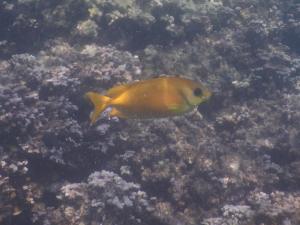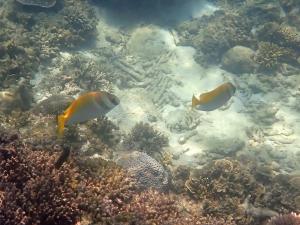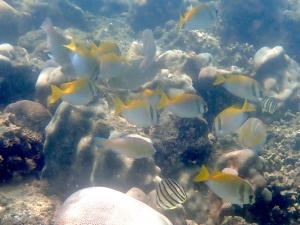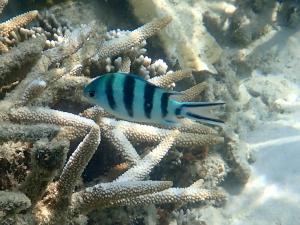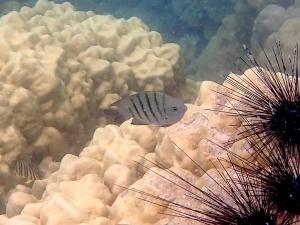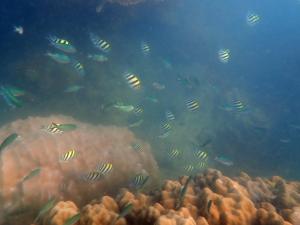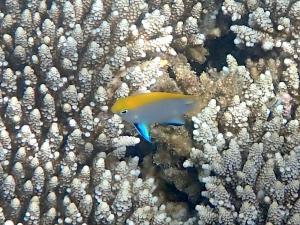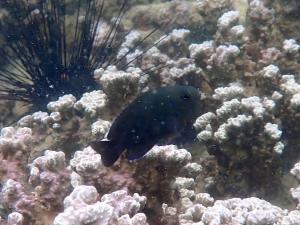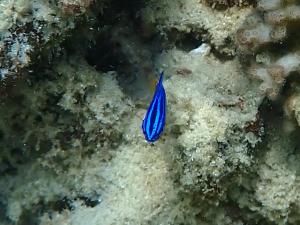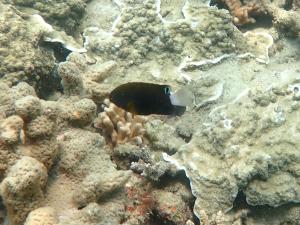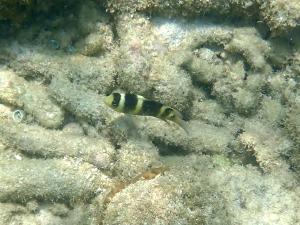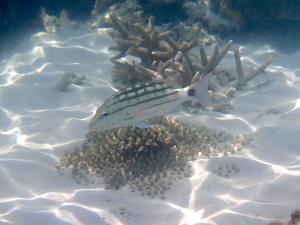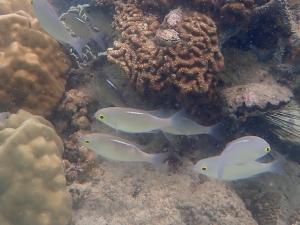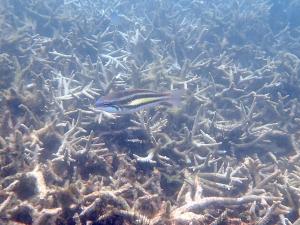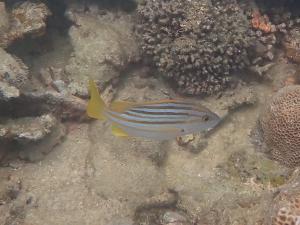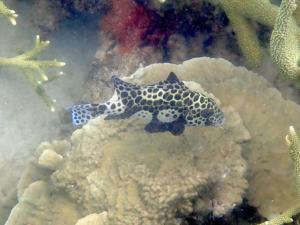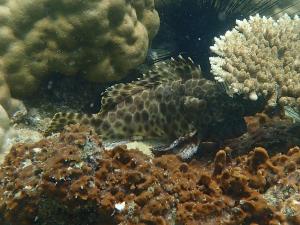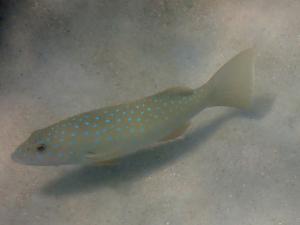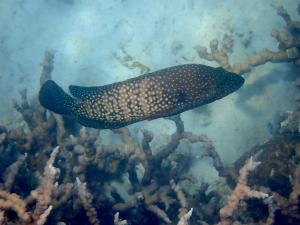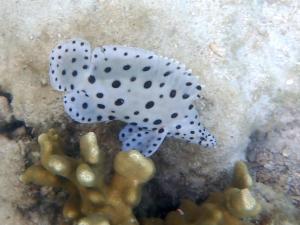
Batu Batu Resort Malaysia
Batu Batu Resort
Batu Batu Resort, Pulau Tengah, 86800 Mersing, Johor, Malaysia
Coordinates in degrees decimal: 2.47398333 N, 103.96062778 E.
Visited in October-November 2023. Photographer: Nigel and Sylviane Thomas. Cameras: Olympus Tough T6 and Nikon Coolpix W300.
Website: https://www.batubatu.com.my/
Introduction
The Batu Batu Resort is located on Pulau Tengah, which is off the east coast of the Malaysia Peninsular in the South China Sea. Extensive areas of easily accessible coral reef can be found off the south and west coasts of the island. The reef to the west extends over 500m, while the reef to the south is over 700m long. All areas of reef are accessible from the shore, although it is important to choose the correct tidal state to both enter and exit the reef areas.
Pulua Tengah is accessible by ferry from the jetty at Mersing, which is on the east coast of Johor in Malaysia. Mersing can be reached by car or bus from the main international airports at both Singapore and Kaula Lumpur. Journey time from the former is approximately 4 hours and 30 minutes, while journey time from Singapore is anything between 2 and a half hours to 4 hours. This latter due to the often congested border crossing between Singapore and Malaysia.
The resort is low key with the rooms scattered over the hillside above the coastal strip on the south of the island, including some beach side accommodation.
Factors affecting snorkelling
The air temperature in the area is quite stable with the yearly average at 26C and summer (April to October) maximums just below 30C. Seawater temperatures are uniformly warm throughout the year with a minimum monthly average in January at 27.6C and an average maximum in May at 29.9C, so no need for a wetsuit at any time. The area is impacted, with respect to snorkelling and diving, over the period November to February, due to the North East Monsoon (NEM).
The specific weather and water conditions that might affect snorkelling include:
- Rainfall is significant during the period, October to January exceeding 435mm during December. This level of rainfall causes large quantities of sediment to be released from the rivers on the east coast of the Malaysian Peninsular, from early November to February, which, when combined with other factors (see below) seriously impact the potential to snorkel, due to reduced visibility,. The lowest levels of rainfall, although still quite high, are between February and September, generally less than 180mm per month.
- The strongest winds occur during the period December to February, exceeding 20mph approximately 20 of the time. These winds are from the NNE (part of the NEM) and they prevail until April, when the direction changes to the SSE and eventually become southerly until November.
- The lightest winds occur in April to May when the winds are generally below 12mph.
- The swell, when it occurs, is generally from the NNE (again part of the NEM) and is only present at greater than 0.5m height during the period November to March. These conditions when combined with stronger winds create rough seas, sufficient to make snorkelling impractical and unsafe.
- The tidal range at the resort (based on the port of Mersing) can be as large as 3m with lows at or slightly above 0.0m and highs in excess of 2.8m. Low water exposes a large area of intertidal so you will need to check your entry and exit location carefully. The island also has, at times, a single low/high water per day rather than the usual double low/high water cycle. Check this on the following website https://www.tide-forecast.com/locations/Mersing/tides/latest.
- Some localised currents exist around the headlands on the south-eastern and north-western corners of the island, so always be aware of your safe exit point.
- Vessel activity was only evident in the vicinity of the jetty for short periods every day.
Ecology
The habitats that can be observed while snorkelling at the resort include: extensive coral reef areas which are primarily mixed species outcrops, low density seagrass beds, coral debris and sand in the shallow waters, clean sands both inshore and offshore, artificial structures on the jetty.
A total number of 240 species were identified during our 10 day trip, including 66 fish species, several of which are typical of turbid water conditions. The coral in general is in a healthy state and comprises a wide variety of species, with over 60 recorded, including soft corals. I have used the recommended 3 stage approach to identifying corals, using a distance shot for overall form, closer for branching structure and finally a close-up to look at new growth form. (Kelley R, 2022. Indo Pacific Coral Finder, 2022 edition, BYOGUIDES followed by http://www.coralsoftheworld.org/page/home/). Associated species included numerous molluscs (17), with echinoderms in great abundance, particularly in the shallow reef areas.
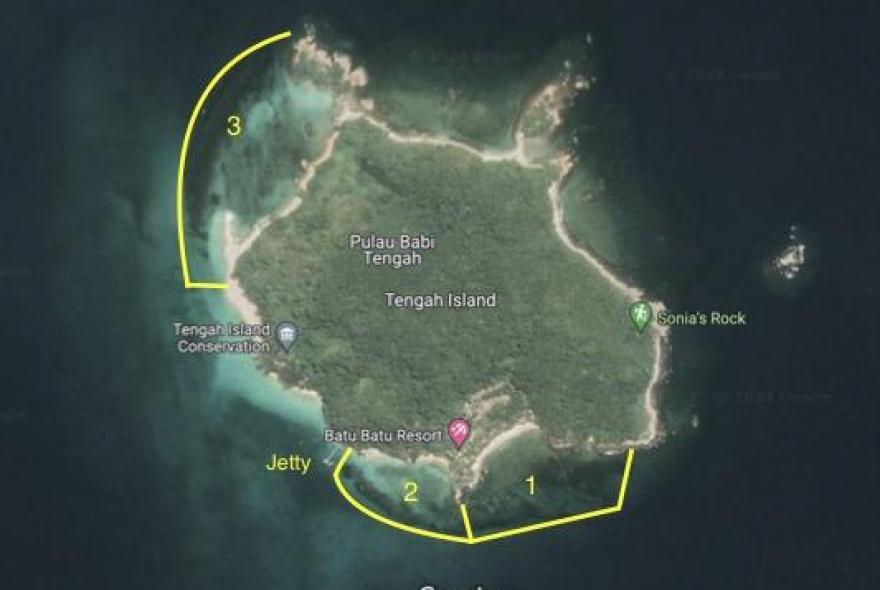
Batu Batu resort on Tengah Island has three areas that are easy to access and support differing communities of corals. These areas have been numbered 1 to 3. The area around the jetty is different, with the artificial structures supporting an interesting attached fauna and the shade from the jetty encouraging numerous fish species, including sharks. Between the jetty and area 3 a large expanse of fairly sparse seagrass amongst sand was noted.
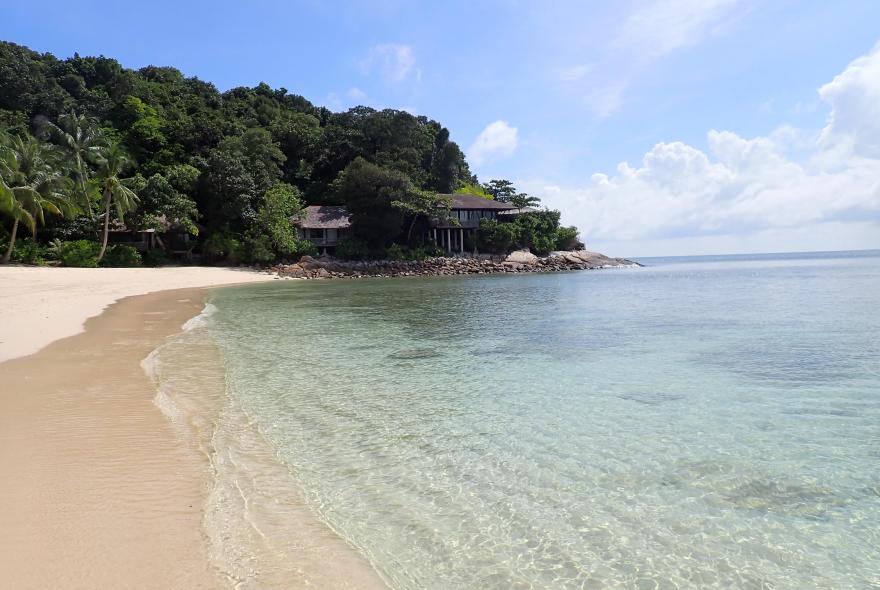
One of the easiest access points is off the beach at area 1, with gently sloping sands. Image is facing southeast. However, this is only accessible at mid to high tide. It is worth noting that the southern edge of the bay is popular with small to medium sized Black Tipped Reef sharks at high water.
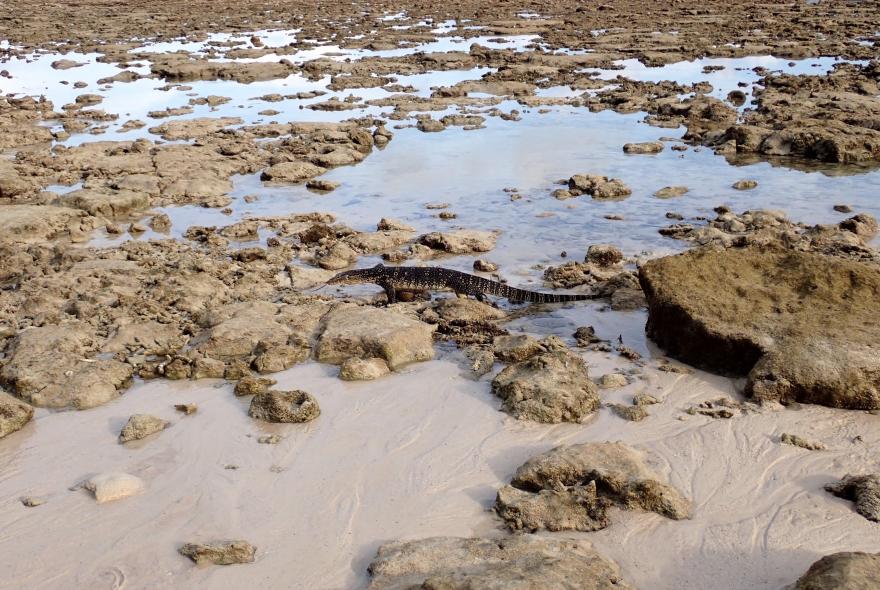
The image shows the same area of beach at low water, with extensive areas of the intertidal exposed. Also note one of the local intertidal lizards!
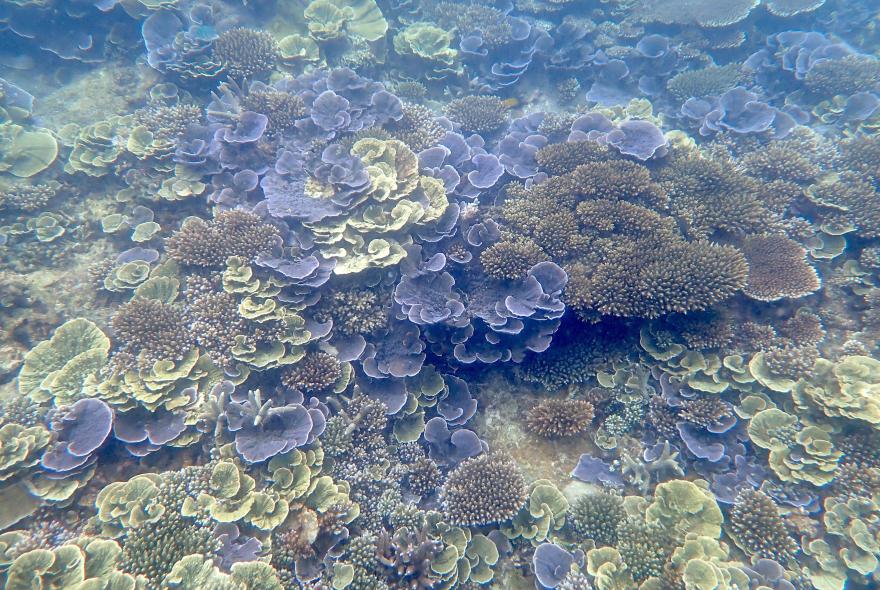
Offshore in area 1 and merging into area 2 significant areas of Acropora coral can be observed. These areas have good mixed, fish species populations.
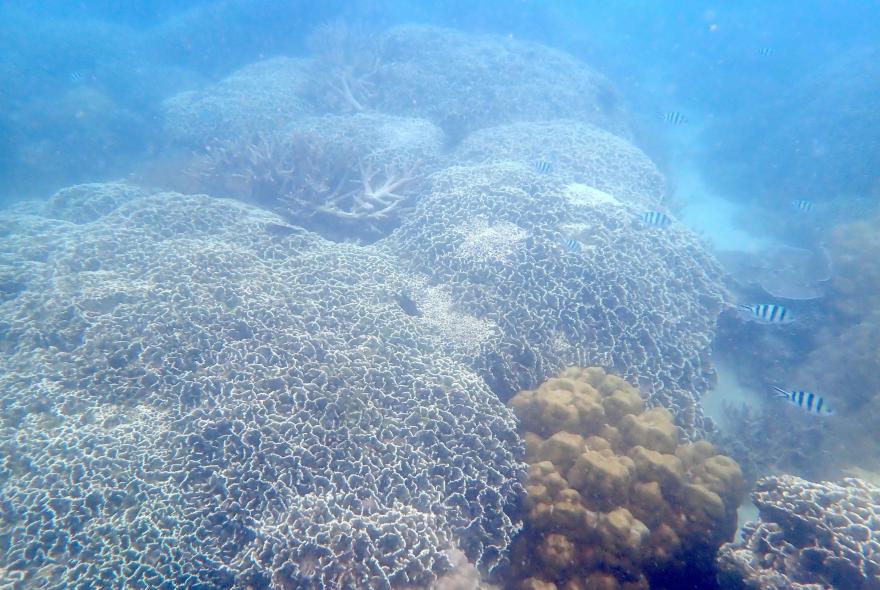
Further into area 2 the corals become diverse with mixed Acropora, Porites and, at the end of this reef section, extensive areas of Heliopora.
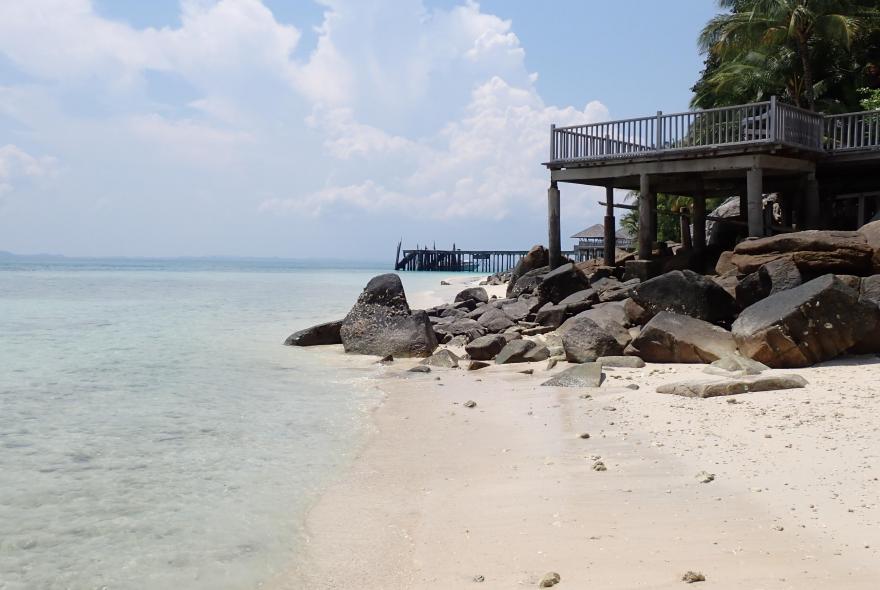
Entry to area 2 can be made at most states of tide, with easiest access from the western extent of the swimming pool beach. Keeping to the sandy shore edge will allow you to follow the reef edge into deeper water. This also allows you to visit the jetty area, watching out for rays and sharks.
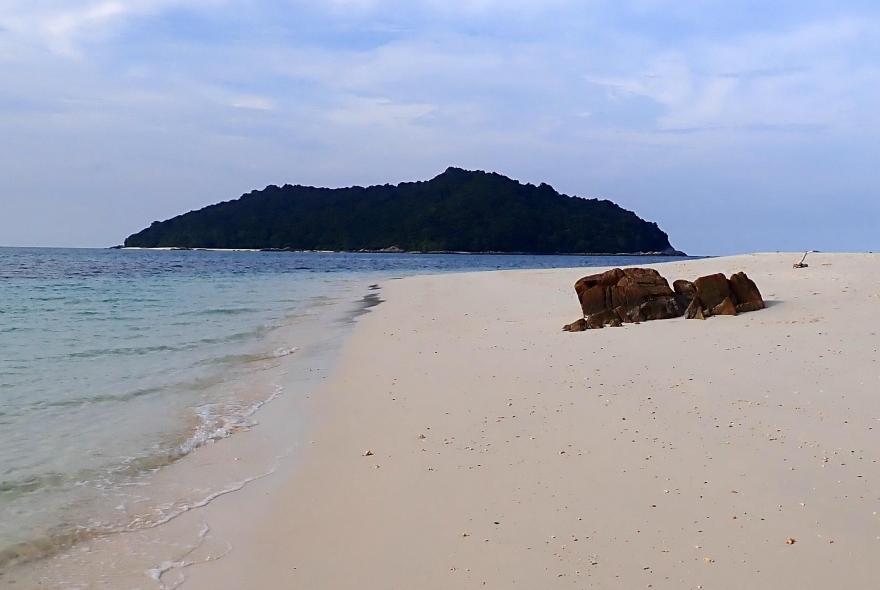
Area 3 can be easily accessed from the beach on the western (lefthand) side and from the tip of the sand spit. Again, be aware of the state of tide, as entry at mid to low water is not recommended due to the extensive areas of shallow water coral and accompanying urchins.
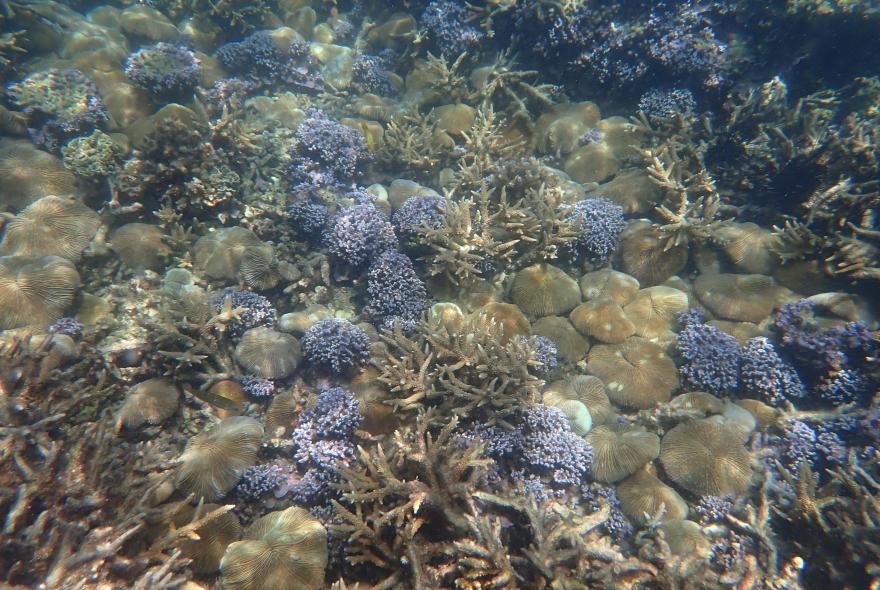
The reef can be followed around to the northeast, although be aware of some tidal driven currents. The corals in this area are substantially Acropora species, with colourful patches of Porites rus and some unusually large patches of Fungia species.
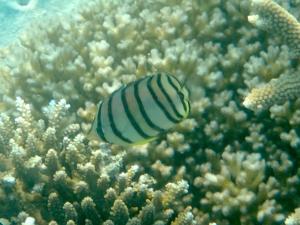
Eight-Banded Butterflyfish (White variant). Chaetodontidae. Chaetodon octofasciatus. All areas very common. Typical of turbid waters.
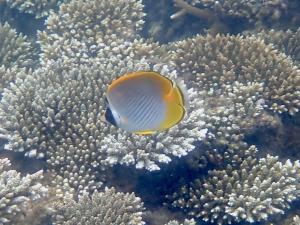
Panda Butterflyfish. Chaetodontidae. Chaetodon adiergastos. Noted over reef tops, areas 1 and 2. Typical of turbid waters.
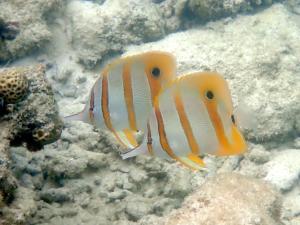
Long-Beaked Coralfish. Chaetodontidae. Chelmon rostratus. Frequently noted over reef tops, in pairs. Area 2. Typical of turbid waters.
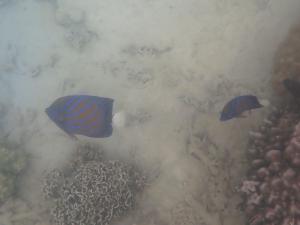
Blue-Ringed Angelfish. Pomacanthidae. Pomacanthus annularis. Off the reef edge in area 2. Typical of turbid waters.
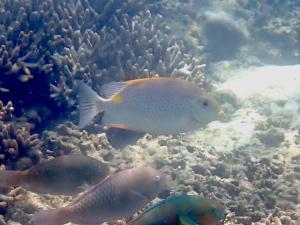
Golden Rabbitfish. Signaidae. Siganus guttatus. Forms schools, including other species, areas 1 and 2.
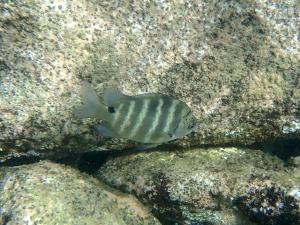
Blackspot Sergeant. Pomacentridae. Abudefduf sordidus. Noted in shallow waters amongst rocks, between areas 1 and 2.
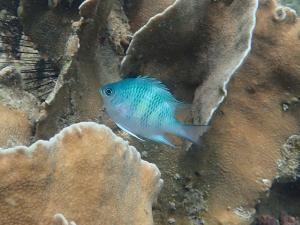
Staghorn Damsel. Pomacentridae. Amblyglyphidodon curacao. Amongst live coral, particularly Acropora, all areas.
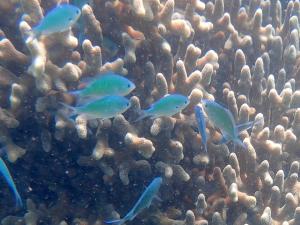
Black-axil Chromis. Pomacentridae. Chromis atripectoralis. In shoals above branching corals, all areas.
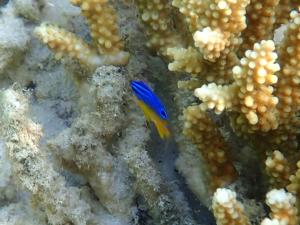
Juvenile Blueback Damsel. Pomacentridae. Pomacentrus simsiang. Noted hiding in coral branches, all areas.
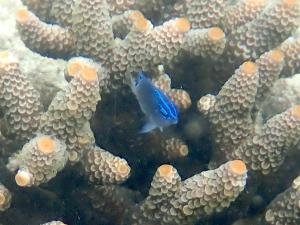
Juvenile Threespot Damsel. Pomacentridae. Pomacentrus tripunctatus. Noted all areas hiding amongst corals.
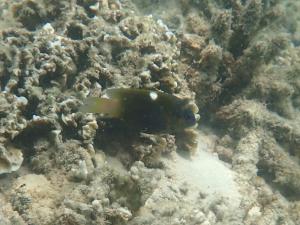
Pale-spot Damsel. Pomacentridae. Dischistodus chrysopoecilus. Area 2. Possibly a nest guarding male.
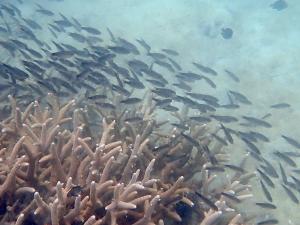
Small shoal of Duskytail Cardinalfish. Apogonidae. Taeniamia macropetra. Noted amongst Acropora in area 3.
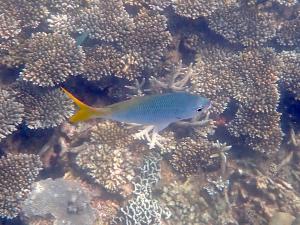
Possibly a Yellowtail Emperor. Lethrinidae. Lethrinus ?atkinsoni. Noted over the top of the reef, areas 1 and 2.
